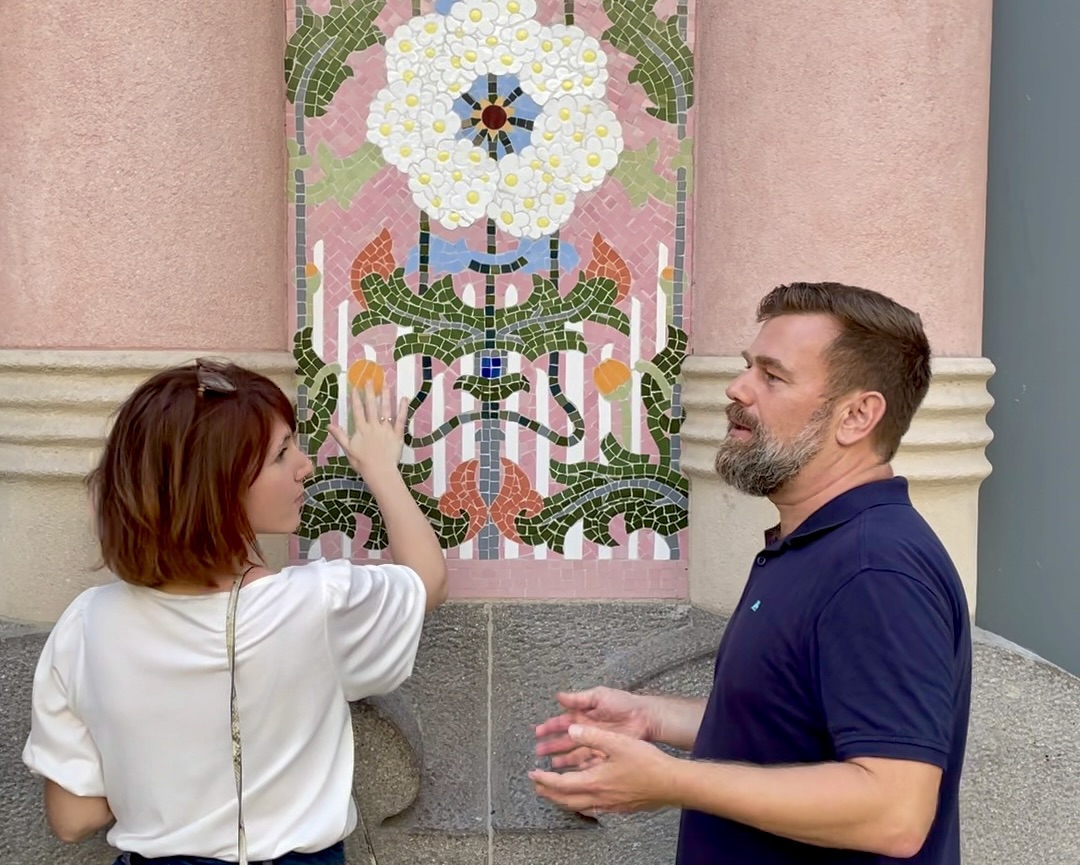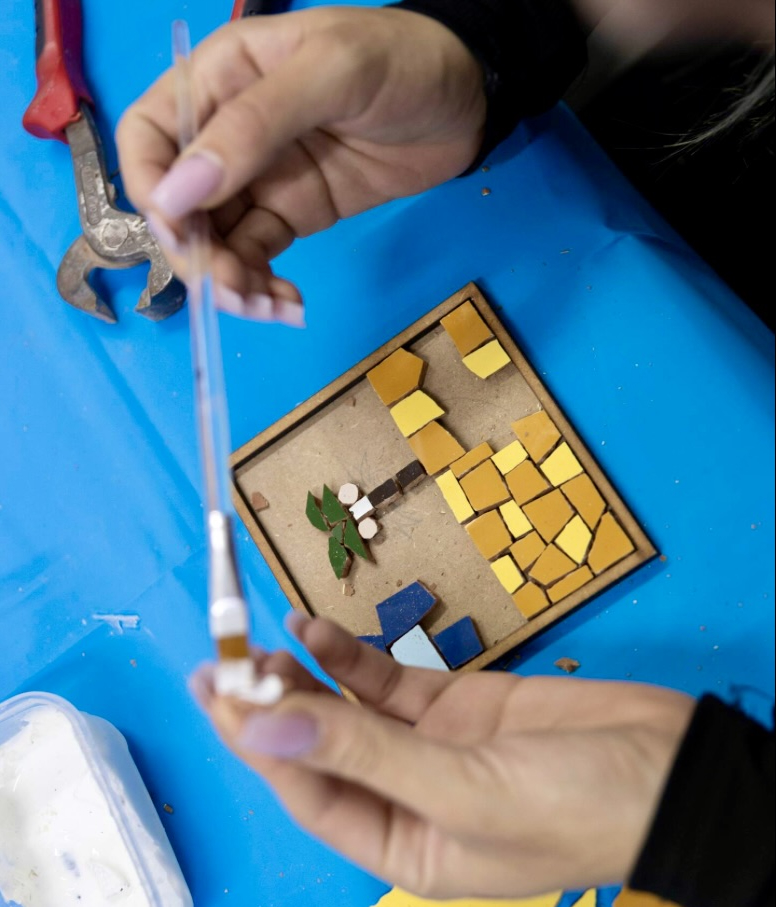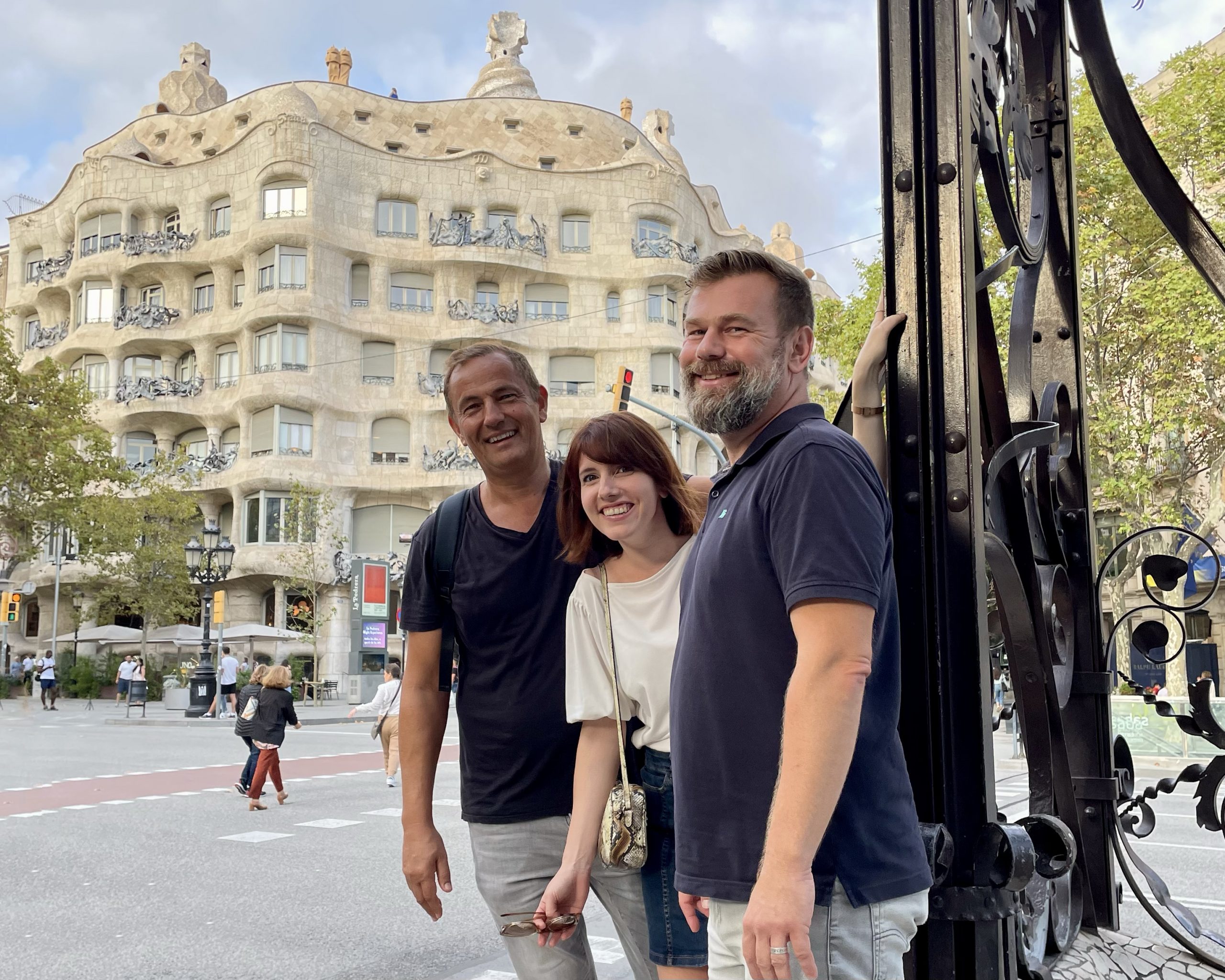Last Updated on December 20, 2025 by Christian Heide
Discover the history, architecture, and must-see spots of this iconic park.
Park Güell is a site where distinctive architecture and natural surroundings come together. Located in Barcelona, this park was designed by architect Antoni Gaudí and is known for its unique style and historical significance. In this overview, we will explore its background, design features, and key areas of interest. Whether you are interested in architecture, history, or city views, Park Güell offers a varied experience. Use a map to guide your visit and discover the different elements of this well-known park.
Introduction to Park Güell and its significance in Barcelona’s history
Park Güell is a must-see attraction for anyone visiting Barcelona. This iconic park, designed by renowned Catalan architect Antoni Gaudí, is not only a masterpiece of modernist architecture but also holds significant historical and cultural importance in the city.
Located on Carmel Hill in the Gracia district of Barcelona, Park Güell was originally commissioned by Eusebi Güell, a wealthy businessman and Gaudí´s patron, as an exclusive residential development. The project aimed to create an upscale garden city with luxurious houses and amenities for the upper class citizens of Barcelona. He enlisted Gaudi as the lead architect for the project and gave him complete creative freedom to design and build as he pleased.
Gaudí began working on the project in 1900 and spent the next 14 years transforming the rugged hillside into a stunning landscape filled with intricate structures, colourful mosaics, and lush gardens. However, due to lack of interest from potential buyers and financial difficulties faced by Güell, the project failed to materialise as planned. In 1926, it was opened as a public park under the ownership of the Barcelona City Council.
Today, Park Güell stands as one of Gaudí’s most famous works and attracts millions of visitors each year. Its unique blend of natural elements with avant-garde architectural features makes it a true gem in Barcelona’s crown.
The park is divided into two areas – the Monumental Zone which includes some of the most famous landmarks such as Dragon Stairway and Hypostyle Room; and the outer area which encompasses most parts of the park including its expansive gardens.
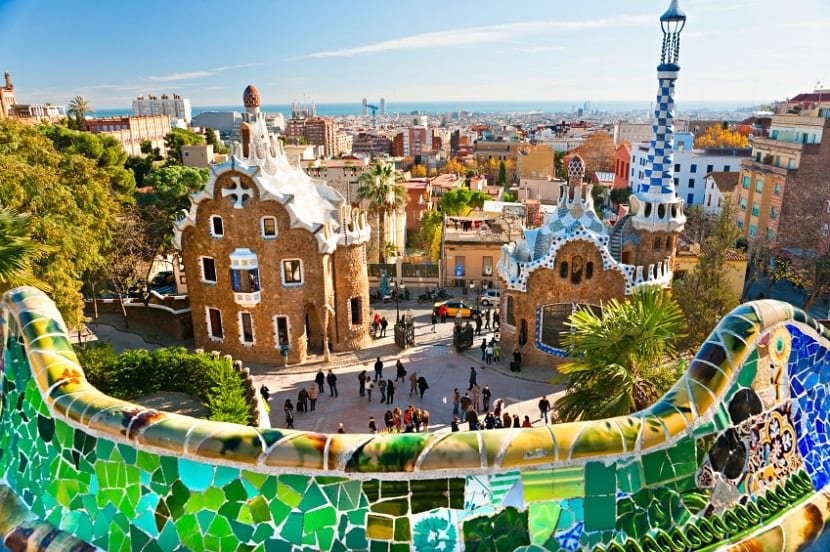
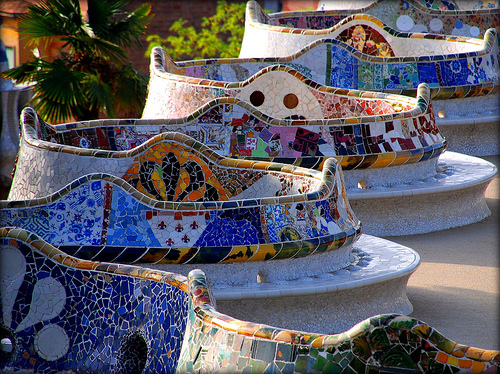
Who is Antoni Gaudí? A brief background on the architect and his influence on Park Güell
Antoni Gaudí is a world-renowned Catalan architect, known for his unique and avant-garde architectural style. Born in 1852 in Reus, Spain, Gaudí showed an early interest in art and architecture which later led him to pursue studies in architecture at the Escola Superior d’Arquitectura de Barcelona. After graduating, he quickly gained recognition for his unconventional designs that combined elements of nature, religion, and fantasy.
Gaudí´s most famous work is undoubtedly the Sagrada Familia basilica, but another one of his masterpieces that showcases his innovative and imaginative style is Park Guell. Located on Carmel Hill in Barcelona, Park Güell was originally envisioned as a housing development project by Count Eusebi Güell but was later converted into a public park by Gaudí.
One of the main reasons why Park Güell stands out is because it reflects Gaudí’s deep connection with nature. He believed that architecture should be integrated with its surroundings rather than standing out from them. This philosophy is evident throughout the park as it features winding paths that follow the natural contours of the hillside and structures that blend seamlessly with the landscape.
In addition to his love for nature, Gaudí also incorporated elements of Catalan culture and history into Park Güell. One such example is the iconic ceramic dragon at the entrance of the park known as “El Drac.” This colorful mosaic-covered sculpture has become synonymous with Park Güell and has become one of its most photographed spots.
Exploring the iconic structures of Park Güell: The Dragon Stairway and the Hypostyle Room in the Monumental Zone
Park Güell is a UNESCO World Heritage Site and is one of the most iconic and recognisable landmarks in Barcelona.
One of the main highlights of Park Güell are its stunning structures that reflect Gaudi’s love for nature and incorporation of organic forms into his designs. The most famous of these structures are the Dragon Stairway and the Hypostyle Room.
The Dragon Stairway, also known as the Grand Staircase or Salamander Stairway, is arguably the most photographed spot in Park Güell. This majestic stairway features a colourful mosaic dragon made from broken ceramic tiles, which guards the entrance to the park. The dragon is said to represent Ladon, the serpent from Greek mythology who guarded Hera’s golden apples in the Garden of Hesperides. This symbolises Gaudi’s desire to create a harmonious connection between nature and architecture within Park Güell.
In general, a notable design elements in Park Güell is the extensive use of colourful mosaic tiles known as “trencadís.” This technique involves breaking up ceramic pieces into smaller fragments and then using them to create intricate patterns on surfaces. Gaudí used this method to decorate many structures in Park Güell, including benches, walls, and even roofs.
The grand entrance staircase leads to the Hypostyle Room, envisioned as a potential marketplace within the estate. It boasts 86 intricately carved columns, drawing inspiration from the Doric order. Interestingly, the outermost columns deviate from classical norms with their undulating slopes, yet they serve to accentuate their structural significance. Atop the colonnade rests an architrave supporting a sinuous bench, while an internal conduit channels rainwater from the square into an underground reservoir, featuring the dragon sculpture as an overflow at the foot of the stairs.
Inside, the room’s design creates a cathedral-like ambiance, with sections devoid of columns, simulating three naves. The ceiling, adorned with small domes, employs traditional clay brick construction.
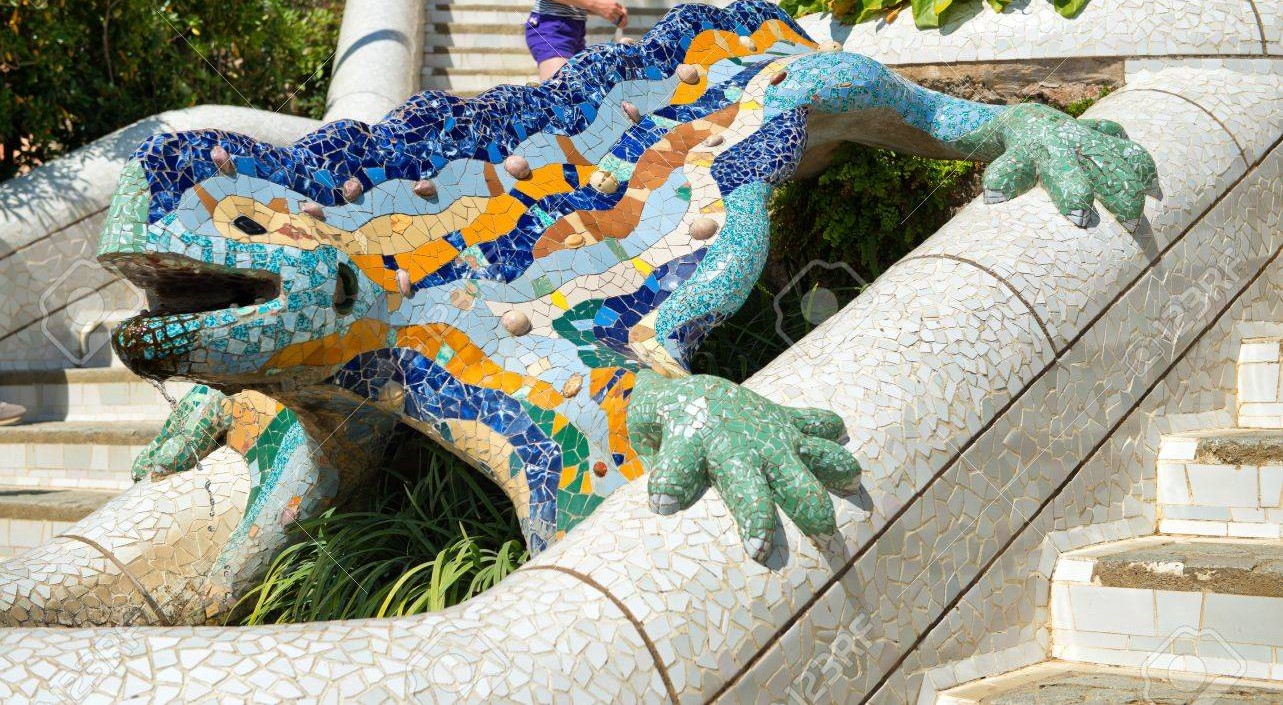
Insider tips for visiting Park Güell
Park Güell is an iconic park in Barcelona that attracts millions of visitors every year. Designed by the renowned architect Antoni Gaudi, this park is a masterpiece of modernist architecture and one of the most popular tourist destinations in Europe. However, with its popularity comes large crowds and long queues, which can make it challenging to fully enjoy the beauty of this park. To help you make the most out of your visit to Park Güell, here are some insider tips:
1. Book tickets online in advance:
One of the most important tips for visiting Park Güell is to book your tickets online well in advance. This will not only save you time but also ensure that you don’t miss out on the opportunity to visit this stunning park. The park management has limited the number of visitors per day, so booking early guarantees entry and avoids disappointment.
2. Visit during off-peak hours:
Park Güell tends to be less crowded during early mornings or late afternoons, especially on weekdays. If possible, try to plan your visit during these off-peak hours to avoid long lines and crowds.
3. Wear comfortable shoes:
The park covers a vast area with many hills and stairs; therefore it’s essential to wear comfortable shoes while exploring Park Güell. There’s a lot of walking involved, so wearing appropriate footwear will ensure that you have a pleasant experience without any discomfort.
Things to do in Barcelona
The Barcelona Feeling offers a two-hours walking tour dedicated to the beautiful architecture of Modernism that is so predominant in Barcelona. We will not only explain to you several masterpieces of Gaudí but also of other contemporary architects. The experience “Gaudí and Barcelona Legends” is a great addition to a visit of Park Güell.
And if you have loved the mosaic work in Park Güell we recommend to you a mosaic workshop in trencadís style. Gaudí perfected this craft. It can be booked as an addition to the previously mentioned experience. Check out “Feel like Gaudí” and create your own souvenir in Gaudí style!
